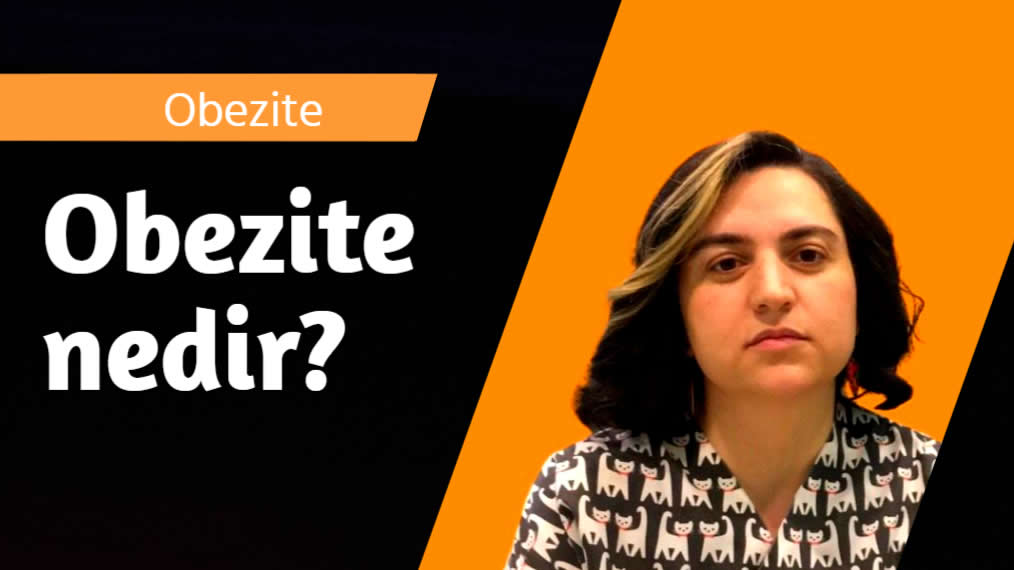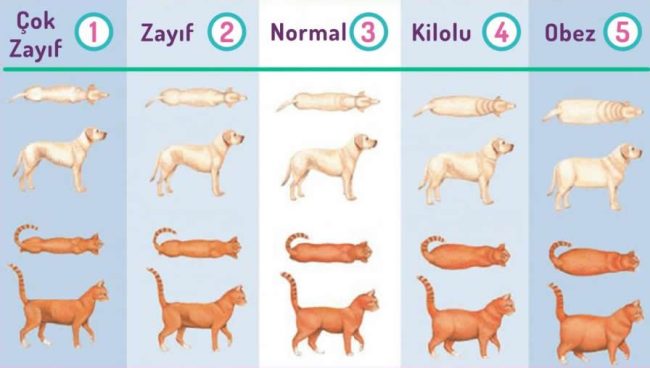It means that the body weight of cats and dogs is at least 20% more than the ideal.

What is obesity?
What is insulin?
Insulin is a polypeptide secreted from the islets of Langerhans in the pancreas. It acts by binding to special receptors in cells. It lowers the glucose level in the blood, increases the glycogen storage in the tissues, increases the metabolic rate of glucose. It binds to other tissues other than the brain and red blood cells. It is most effective in skeletal muscle and adipose tissue. It also increases glucose transmission in cardiac muscle and smooth muscle. With the effect of insulin, glycogen is stored in the liver, when it reaches a certain level, the synthesis stops and the glucose in the tissue is converted into fat. Insulin has a half-life of five minutes. 75-80% of insulin, whose task is finished, is broken down by the liver and kidney.
What is the bond between obesity and diabetes, insulin resistance?
The link between obesity and diabetes is associated with 'insulin resistance'. Obesity progresses in parallel with hyperinsulinemia and insulin resistance. Trying to tolerate the situation in insulin deficiency, the body increases the number of receptors that insulin binds to in cells. In this way, it aims to benefit from the low insulin in the body at the maximum level. But there is hyperinsulinemia in obesity. In this case, the opposite happens, the number of receptors in the cells decreases.
In obese animals, insulin has deviated from its normal physiology. As the number of insulin receptors decreases, during oral glucose intake, insulin function becomes insufficient and the body induces insulin production again and again. There is an increased level of insulin in the body but a slow glucose transition. This situation is called 'insulin resistance'. When insulin is functionally inadequate, lipolysis is markedly increased in obese patients. As a result of the increase in lipolytic activity, free fatty acids increase in the blood, as a result, glucose production in the liver increases and insulin secretion from the beta cells of the pancreas decreases. Obesity develops as triglyceride stores increase in adipose tissue. As a result, the response of muscle and adipose tissue to insulin and insulin-induced glucose transport are reduced. First, insulin resistance starts, then insulin secretion increases to overcome it, and eventually insulin secretion decreases. This is Type-2 Diabetes.
What problems does obesity cause in animals?
Obesity is an increasing problem in pets as well as humans. This situation, which we mostly ignore and do not consider as a problem, also invites other extremely important health problems. Ongoing research shows that excess fat in the body is more than just a standing reservoir. The adipose tissue accumulated in the human and animal body works like an endocrine organ. It releases some hormones and inflammatory mediators into the blood. (Interleukins, TNF, resistin, angiotensin etc.) It is like a chronic disease in the background. One of its most important effects is to desensitize cells to insulin. As you know, glucose is our body's energy provider. Insulin mediates the use of glucose by passing it into cells. However, obesity disrupts this mechanism and causes a chain of deteriorations that lead to Type-2 diabetes. Also known as 'diabetes'. What that innocent adipose tissue in our body does is not limited to this. From joint problems to kidney disease, abdominal tumors, it causes diseases to a great extent.
What are the causes and solutions of obesity in pets?
Most of the time, what causes obesity is your pet's sedentary life, and a broken nutritional discipline is one of the leading causes. Then you can force your pet to act by playing more with your pet. You can increase fiber intake and prevent weight gain by eating right, avoiding fatty food residues, and perhaps adding a few small portions of vegetables and fruits to your daily diet.
By looking at the table below, you can evaluate your cat/dog for obesity. If you think she needs to lose weight, you should avoid a strict and uncontrolled diet and contact us! After the examination and necessary tests, we can help your pet lose weight in a healthy way with diet adjustment and acupuncture!

What are the causes and solutions of obesity in pets?
Most of the time, what causes obesity is your pet's sedentary life, and a broken nutritional discipline is one of the leading causes. Then you can force your pet to act by playing more with your pet. You can increase fiber intake and prevent weight gain by eating right, avoiding fatty food residues, and perhaps adding a few small portions of vegetables and fruits to your daily diet.
By looking at the table below, you can evaluate your cat/dog for obesity. If you think she needs to lose weight, you should avoid a strict and uncontrolled diet and contact us! After the examination and necessary tests, we can help your pet lose weight in a healthy way with diet adjustment and acupuncture!


